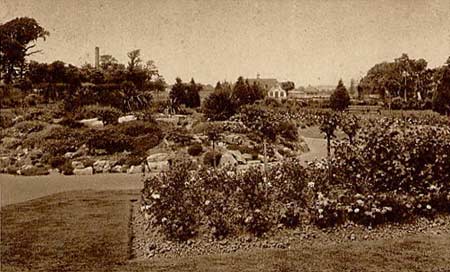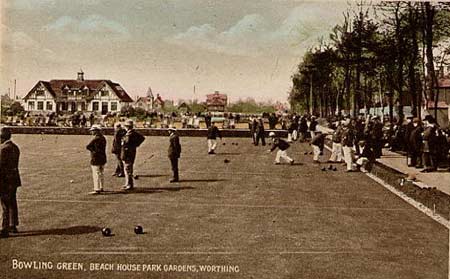|
Tony Hammond recalls far off days before the war when each park was maintained and cared for by its own park keeper in this second part of his memories. He lived with his parents in a house on the west side of Park Road.
'Towards the bottom of Park Road was the 'hole in the wall' shoe repairer mentioned by Grace Tickner, but this was not the only cobbler in Park Road. Where Park Road joins Lyndhurst Road was a shoe repair shop not much bigger than the hole in the wall, this one was free standing and was brick built, it stood quite on it's own and was just a few doors away from my next home, number 84, on the other side of Park Road. It was here that I watched a large gas holder being built on the opposite side of the road, and it eventually blacked out much of the light from our house. Once again I was able to witness the skills of the workforce, I simply marvelled at the way that red hot rivets were tossed about, finally to be moulded into shape with a great deal of noise which seemed to go on all day.
Worthing Hospital was by today's standard quite small, and the children's ward had a large window which faced Lyndhurst Road. If you peeped over the wall you could see some of the children playing with what seemed an abundance of nice toys, I can well remember thinking that I would like to try some of that, and very nearly did so when I rode my tricycle into the boating pool which was being excavated at that time.
Behind 84 Park Road was a wood yard, where huge piles of timber were reduced to small bundles of kindling by the Brown family. The smell of the tarred string that bound the bundles tightly together still lingers in my nostrils. I wish that I could remember exactly how the ingenious device they had for tying the bundles tightly together worked.
Our local shop was run by the Wheelers, and stood on the corner of Park Road and Lyndhurst Road, and for one old penny you would get a very substantial paper bag full of broken biscuits. Valerie Wheeler was about my age and a budding starlet, I remember here giving a very good impression of Shirley Temple at the Pier Pavilion.
Homefield Park was an ideal place to play, lots of open space, and nice wide shrubby borders to hide in. In strict contrast was Beach House Park, put a foot wrong here and you would soon have the park keeper shouting at you, 'Get off the grass' and we would. I simply loved the rockery, the smell of the aromatic shrubs was something very special, and today it is very much as it was all those years ago.

Beach House Park rockery where a young Tony Hammond used to love the smell of aromatic shrubs in the 1930's.
|
For a real treat my mother would take me for tea and cakes at the café which was part of the bowls pavilion; there you were served by very smart waitresses in black dresses and frilly aprons.
My first school was St George's at the end of Lyndhurst Road; it was a short walk from Park Road and you just followed the tall brick wall of the gas works. The school site is now under the car park of Safeway.
I spent many hours in the museum, where you had to walk on tiptoe and speak in hushed whispers. Of particular interest to me were the rows of stuffed birds in glass cases, and the highly polished drawers full of butterflies.
One thing I nearly forgot to mention was the Saturday morning pictures at the Plaza and the Odeon. For a few pennies we were treated to an adventure film, usually a western, and a cartoon. The noise was beyond belief.
Shoreham airport was also a great attraction for me, and I would quite often walk there along the sea front, it took all
day but was well worth the effort.
My friends were Peter Ford, Don White, Raymond Clarke and his sisters Mavis and Betty. All of them lived in Park Road.
Gordon Kimmins was a school chum, his family ran a foundry in Providence Terrace, which was an exciting place to go with all sorts of things going on.
At the start of the war we moved to Findon to live with my mother's family and it was here that another phase of my life began.'

Playing bowls at Beach House Park. The pavilion can be seen on the left, where Tony Hammond was treated to tea and cakes in the café before the war. Beyond is Worthing Hospital.
|
| |


